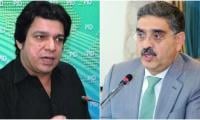KARACHI: Asian Development Bank (ADB) sees Pakistan’s growth to decelerate at 2.6 percent during the current fiscal year as the novel coronavirus effects pose downside risks to the economy already reeling under stabilisation measures.
ADB said growth in Pakistan would plummet to 2.6 percent in 2020 as economic stabilisation constrains domestic demand, cotton output stagnates, and COVID-19 takes its toll, before edging up to 3.2 percent in 2021 as presumed successful correction of macro imbalances restore confidence.
“Pakistan’s strong and decisive policy measures have started to yield positive results in reversing macroeconomic imbalances and narrowing current account deficits,” ADB Country Director for Pakistan Xiaohong Yang said at the launch of ADB’s latest annual flagship economic publication, Asian Development Outlook 2020.
“Although Pakistan's economy is in better shape than before, the nation needs to work together to tackle the new challenges posed by COVID-19—including uncertain short term growth prospects—and its related socioeconomic repercussions. The government’s emergency package and extensive use of Ehsaas will be vital to blunting the detrimental impacts of the pandemic, particularly on the poor and vulnerable,” Yang said in a statement.
ADB expected agriculture sector to see slow growth as the worst locust infestation in over two decades damages harvests of cotton, wheat, and other major crops. The government has declared a national emergency to combat the infestation.
“Modest growth is expected in some export-oriented industries such as textiles and leather. However, large-scale manufacturing, which provides over half of industrial production, will likely contract, as it did in the first half of FY2020 when currency depreciation ran up production costs for some industries and forced them to raise their prices,” it said. “The ongoing COVID-19 outbreak will pose a downside risk to growth prospects as it further dampens consumer demand and as private businesses are temporarily shut down in efforts to control the pandemic.”
Growth was expected to accelerate to 3.2 percent in FY2021, driven by a rebound in investment as macroeconomic imbalances are corrected, currency depreciation is contained, and the locust infestation subsides.
ADB said investment may also receive a boost from the implementation of critical structural reform to improve energy production and distribution and the business climate overall, as well as Moody’s recent upgrade of Pakistan’s credit rating outlook from negative to stable—all of which should enhance investor confidence.
Inflation was projected to accelerate to 11.5 percent in FY2020, reflecting a sharp rise in food prices in the first part of the fiscal year and a 9.8 percent drop in the value of the local currency against the US dollar in the first 7 months of FY2020.
The fiscal deficit was expected to narrow to eight percent of GDP in FY2020 as the government continues to prioritise consolidation. In the first half of FY2020, the deficit fell as revenue collection rebounded from the equivalent of 6.1 percent of GDP a year earlier to 7.3 percent. A fall in import duties caused by import contraction was compensated by the reinstatement of levies on petroleum products and telecommunication services, the elimination of exemptions for export-oriented industries, and higher profit transfers from the central bank and the Pakistan Telecommunication Authority. On the expenditure side, spending increased from 8.7 percent of GDP in the first half of FY2019 to 9.6 percent on higher interest payments and public development programs to protect public investments and support business activity, particularly activity connected with construction. Further, health care and other social expenditure was expected to be significantly higher as the government addresses COVID-19. The decline in the oil price may adversely affect government revenues due to reduced petroleum tax receipts.
The current account deficit was expected to continue narrowing to the equivalent of 2.8 percent of GDP in FY2020 with a reduction in the trade deficit resulting from currency depreciation, the imposition of regulatory duties to contain import demand, and continued recovery in workers’ remittances following declines in FY2016–FY2018.
ADB said the ongoing COVID-19 underscores the importance of strengthening social protection in the country, especially as spending on social development has not kept up with the growing need. The Human Development Report 2019 ranked Pakistan at 152 among 189 economies. Health outcomes remain poor, featuring one of the highest maternal mortality ratios in the region and the third-highest child stunting rate in the world. An estimated 23 million children are out of school. While the portion of the population living below the national poverty line declined significantly from 64 percent in 2001 to 24.3 percent in 2016, the share of rural residents in poverty is consistently more than double that of urban residents.
“Against a backdrop of slow growth, fiscal consolidation, and monetary tightening, a comprehensive social protection strategy is crucial to promote inclusive growth and protect the most vulnerable,” ADB said.
People walk out of a branch of Mashreq bank at Dubai Internet City on Feb. 5, 2012. — Reuters/FileKARACHI: Mashreq...
A Dubai Islamic Bank building seen in this undated photo. — The News/File KARACHI: Dubai Islamic Bank Pakistan...
The picture shows the building of the Securities and Exchange Commission of Pakistan photo. The News/FileISLAMABAD:...
A representational image of gold bangles. — AFP/FileKARACHI: Gold prices in the local market dropped by Rs500 per...
This representational image shows the Electric Cars. — Unsplash/FileNew York: Global policymakers are imposing new...
This image portrays a "Tax Return" written by a typewriter. — Unsplash/FileLAHORE: The government is planning to...







